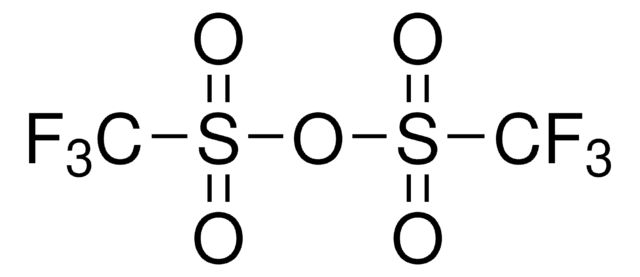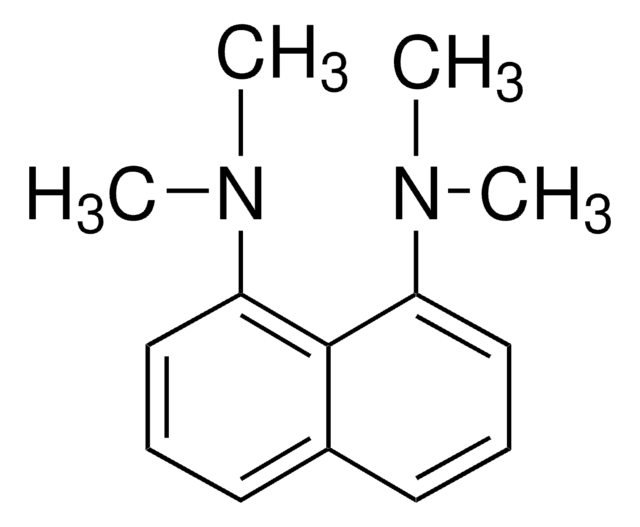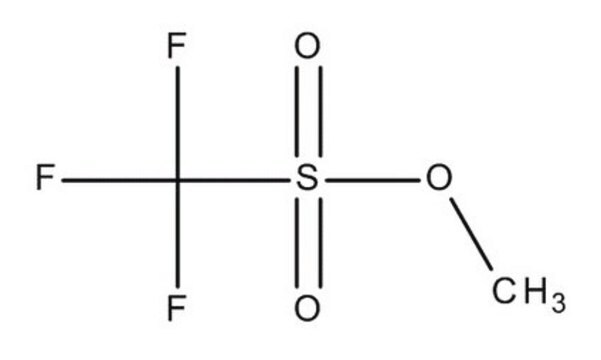Kluczowe dokumenty
249505
2,6-Di-tert-butyl-4-methylpyridine
98%
Synonim(y):
2,6-Bis(1,1-dimethylethyl)-4-methylpyridine, 2,6-Bis(tert-butyl)-4-methylpyridine, 2,6-Ditert-butyl-4-methylpyridine, 4-Methyl-2,6-di-tert-butylpyridine
About This Item
Polecane produkty
Próba
98%
Formularz
solid
współczynnik refrakcji
n20/D 1.4763 (lit.)
bp
233 °C (lit.)
mp
33-36 °C (lit.)
rozpuszczalność
ethanol: soluble 5%, clear to slightly hazy, colorless to dark yellow
temp. przechowywania
2-8°C
ciąg SMILES
Cc1cc(nc(c1)C(C)(C)C)C(C)(C)C
InChI
1S/C14H23N/c1-10-8-11(13(2,3)4)15-12(9-10)14(5,6)7/h8-9H,1-7H3
Klucz InChI
HVHZEKKZMFRULH-UHFFFAOYSA-N
Szukasz podobnych produktów? Odwiedź Przewodnik dotyczący porównywania produktów
Powiązane kategorie
Opis ogólny
Zastosowanie
- in the synthesis of 1,2-dihydro-2-silanaphthalene derivatives
- as base in PtCl4-catalyzed cyclization reactions of homopropargyl azide derivatives
- diastereoselective synthesis of β-thiomannopyranosides
Hasło ostrzegawcze
Warning
Zwroty wskazujące rodzaj zagrożenia
Zwroty wskazujące środki ostrożności
Klasyfikacja zagrożeń
Acute Tox. 4 Oral - Eye Irrit. 2 - Skin Irrit. 2 - STOT SE 3
Organy docelowe
Respiratory system
Kod klasy składowania
11 - Combustible Solids
Klasa zagrożenia wodnego (WGK)
WGK 3
Temperatura zapłonu (°F)
183.2 °F - closed cup
Temperatura zapłonu (°C)
84 °C - closed cup
Środki ochrony indywidualnej
dust mask type N95 (US), Eyeshields, Gloves
Wybierz jedną z najnowszych wersji:
Masz już ten produkt?
Dokumenty związane z niedawno zakupionymi produktami zostały zamieszczone w Bibliotece dokumentów.
Klienci oglądali również te produkty
Nasz zespół naukowców ma doświadczenie we wszystkich obszarach badań, w tym w naukach przyrodniczych, materiałoznawstwie, syntezie chemicznej, chromatografii, analityce i wielu innych dziedzinach.
Skontaktuj się z zespołem ds. pomocy technicznej












